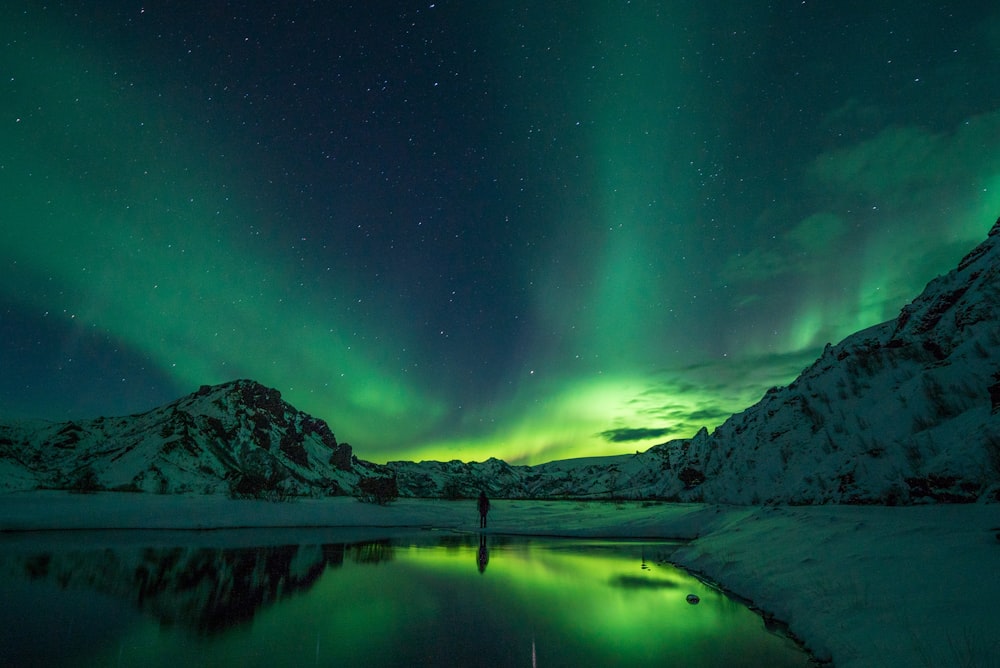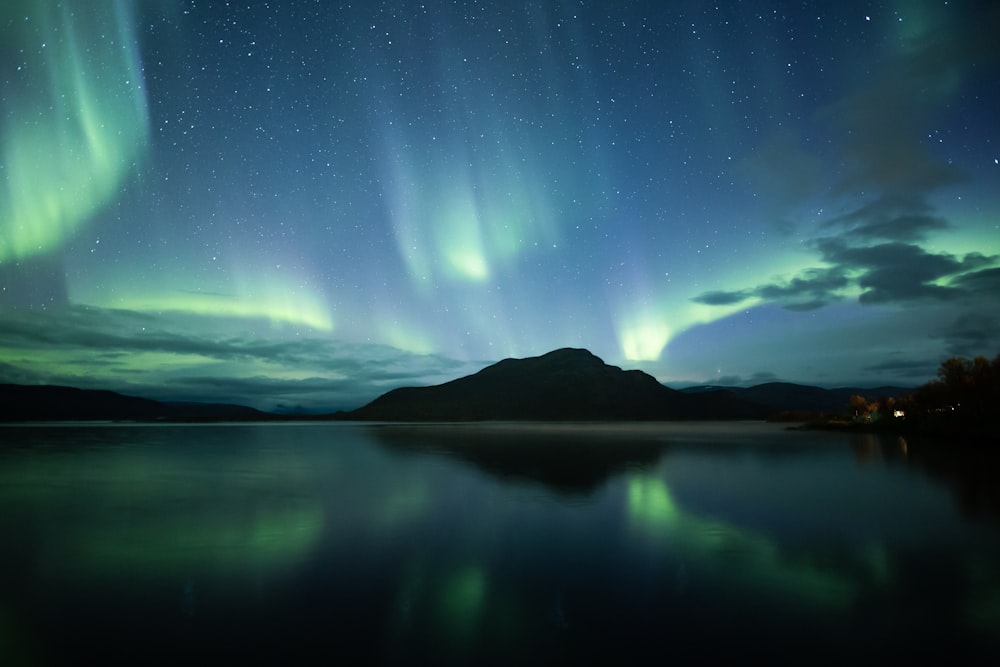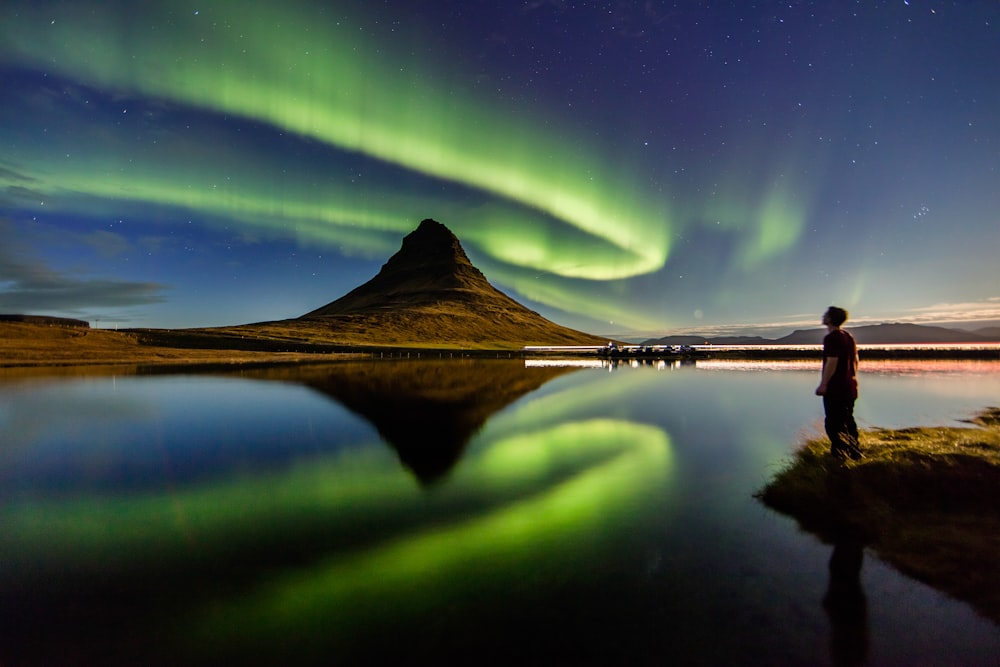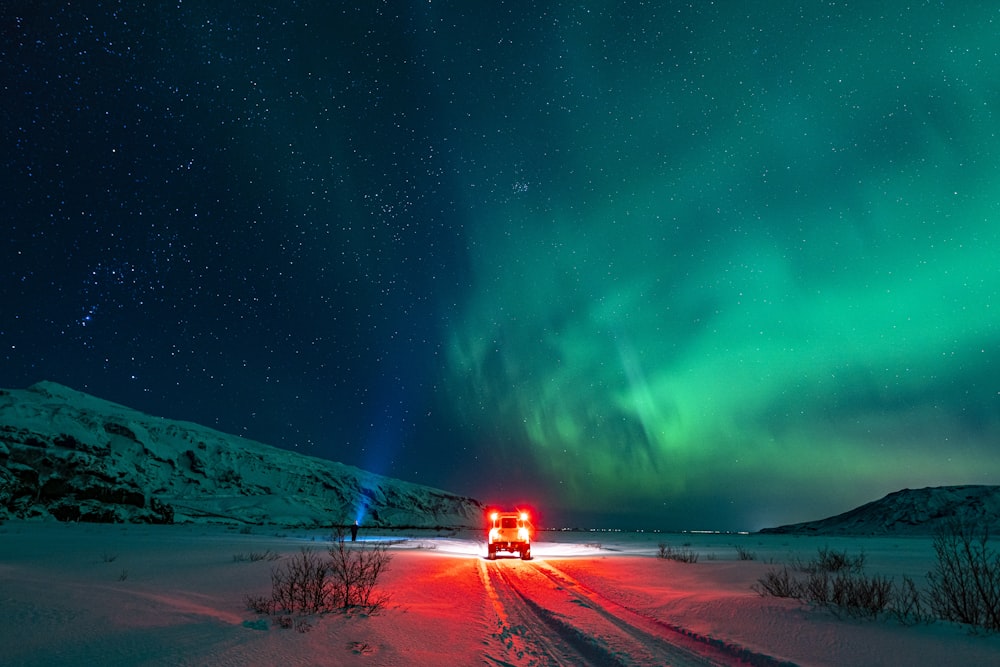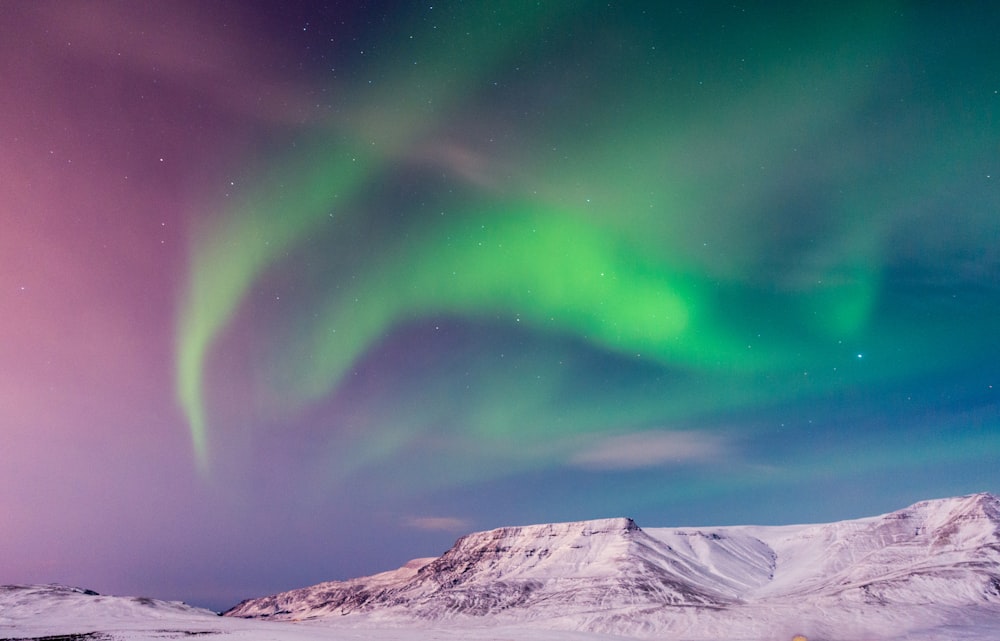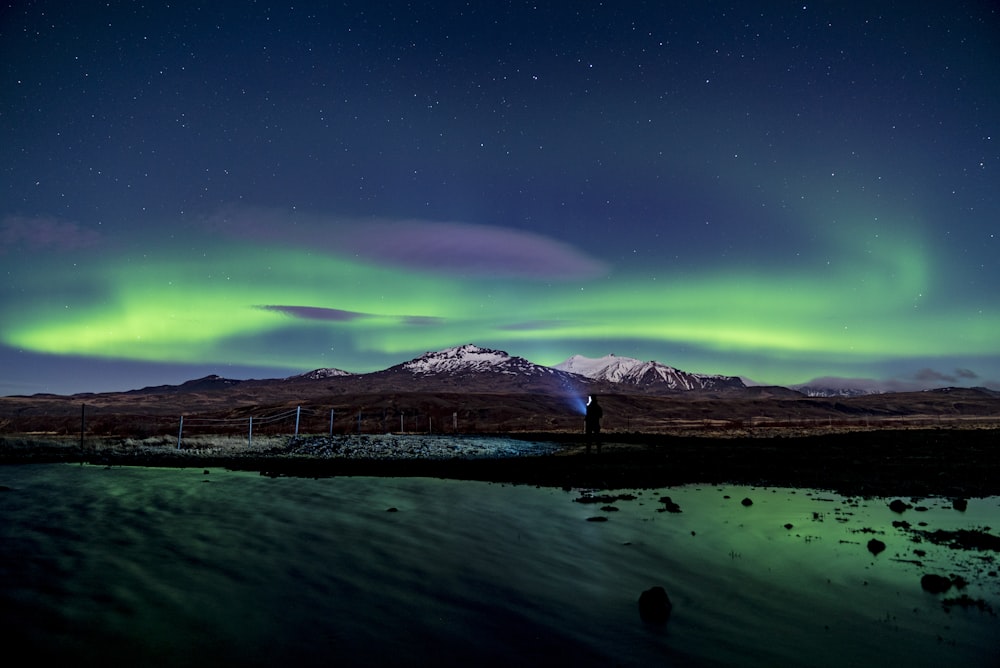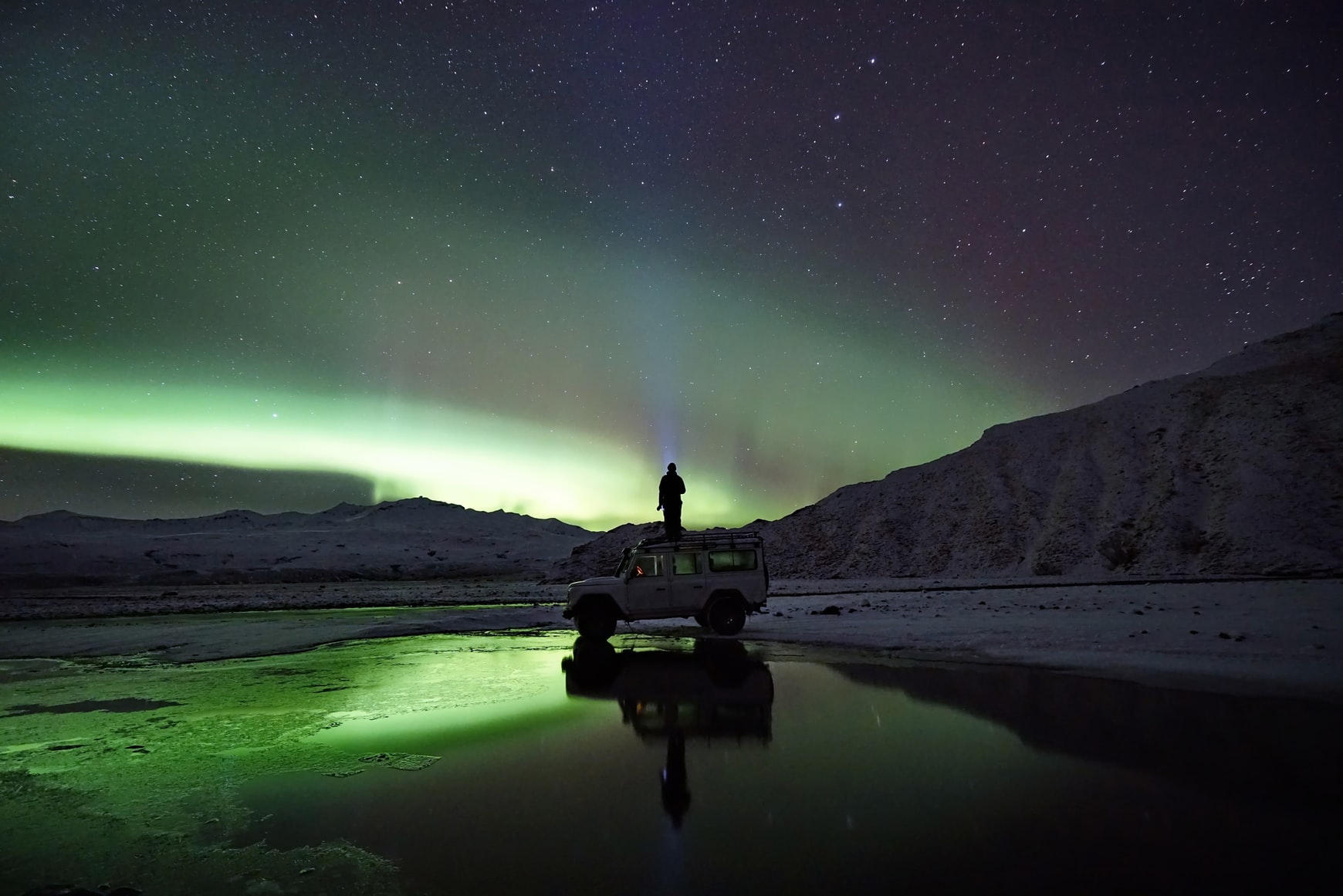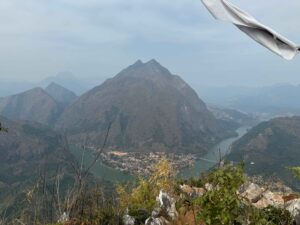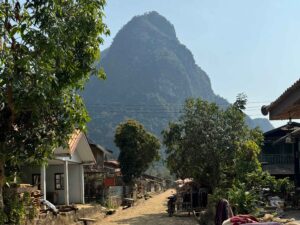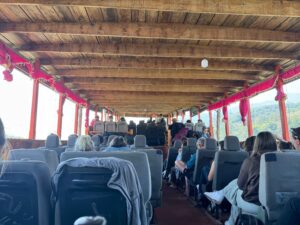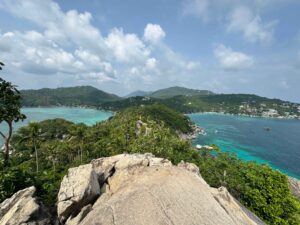Vibrant greens and pinks dancing around the sky. Running, walking, twirling, disappearing, and reappearing on the other end of sight moments later. If you are lucky maybe you will spot reds, purples or even whites. This are the Northern Lights in Alaska.
And this is magic in the real world.
Table of Contents
Ever since I first watched The Polar Express at 7 years old, I have been captivated by the thought of these lights. In recent years, I took even more interest in the chase for Aurora Borealis, or the Northern Lights. I joined Facebook groups, downloaded forecast apps, and researched everything there was to know. I spent many late nights researching ways for this to become my reality.
However, very few people get to experience this natural phenomenon.
In early September 2021, I saw those lights dancing in Denali National Park, Alaska. And they are worth the hype.
I want to share everything I have learned about how to see the Northern lights, and specifically how to see them in Alaska. This is your ultimate guide to seeing northern lights in Alaska.
What are the Northern Lights?
The northern lights are a natural phenomenon that occurs at both the north and south poles. In simple terms, the lights are caused by charged particles from the sun being released and colliding with Earth’s atmospheric gas.
This happens in the article circle, which makes Alaska one of the best places in the world to spot the lights. But if you are able to make it up north anywhere in the world, the rules to seeing the lights remain the same.

What Does It Take to See the Northern Lights in Alaska?
There’s a reason the Northern Lights are on so many people’s bucket list and so few are able to experience them. It takes a perfect storm of events to make it happen. Here is what I have learned over the years.
Dark Sky
A dark sky is a necessity to catch the lights. They are only visible to the naked eye in the total darkness of the night sky. Get away from light pollution and head out at dark.
Clear Weather
The Northern Lights dance around way above the clouds. Clear weather is a necessity. Nonetheless, if you can see the stars you will be able to see the Northern Lights
Northern Location
While it is possible to see the Northern Lights in the continental United States or more southern parts of Europe it is quite rare. Undoubtedly, the best Northern Light hunting can be done in the “Auroral Oval”, aka the Artice Circle.
Undoubtedly, Alaska, Northern Canada, Iceland, Norway, Sweden, and Finland are the best spots to plan a northern lights vacation.
 Best Time of Year to See the Northern Lights in Alaska?
Best Time of Year to See the Northern Lights in Alaska?
If it is dark, the lights are out every night in Alaska.
Aurora viewing in Alaska is from September-April. Importantly, anytime within these months, Alaska experiences darkness making the lights visible.
A common myth about the lights is it has to be cold outside to see the lights. In fact, people say the colder it is outside, the better the conditions!
This is NOT true.
The lights are visible when it is dark outside, and it gets dark in Alaska in the winter. I experienced the lights in early September in sweatpants and a light coat on the outside.
Outside temperatures do not matter, darkness does.
Best Places to See the Northern Lights In Alaska?
The Northern Lights can be seen throughout the entire state of Alaska when conditions are right. So, here are the best places I have found to see the lights.
Fairbanks for Northern Lights in Alaska
The Northern Lights are out every night in Fairbanks if conditions are right. However, you can travel to these places to have the best opportunity to see the lights.
Chena Lake – located about 30 minutes south of Fairbanks at the North Pole.
Cleary Summit – 30 minutes north of Fairbanks.
Anywhere on the outside of town away from lights
Denali National Park for Northern Lights in Alaska
Additionally, Denali National Park is a fantastic spot to catch the light due to the lack of light pollution.
Savage River – 30-45 minutes driving into the park. There is a parking lot at the end of mile 15. Only open when there is little to no snow.
Healy – 15 minutes from the park entrance. Offers a nice valley with
Denali Visitor Center – 1 mile into the park. (This is where I caught them!) Away from light pollution and an open parking lot.
Anchorage for Northern Lights in Alaska
Anchorage can experience the northern lights if the KP index is at a 3 or higher. It sits lower in the state than Fairbanks and Denali often time missing the show. But if conditions are right, these are the best viewing locations in Anchorage.
Mt. Baldy – 30 minutes north of Anchorage. Mountain Overlook situation in a residential area.
Flattop / Glen Alps Trailhead Parking Lot – 30 minutes south of Anchorage
Earthquake Park – 8 minutes from downtown, next to the airport. Offers a beautiful overlook on the water.
Seward
Lastly, although the nights are more commonly seen in other locations, Seward provides many good viewing spots and low light pollution for aurora sightings. Due to its coastal locations, you will be fighting with the clouds on most nights.
Resurrection Bay – Head to the water for an open view of the skies.
Bear Lake – 10 minutes north of the city. Offers minimal light pollution.
How to Read the Aurora Forecast
The Northern Lights are unpredictable. There are forecasts and useful resources to help predict the aurora, but ultimately this forecast changes all the time. Nevertheless, it is best to check the forecast as early as 72 hours out.
There are 3 things to look at when reading the forecast, KP index, Bz, and Solar Wind Speed.
KP index can be found at https://www.gi.alaska.edu/monitors/aurora-forecast. Kp index tells us how wide the aurora band will be fore the night. The KP is especially important for Anchorage, but not as necessary for Fairbanks, because it will always be out in Fairbanks.
Bz is how much the lights will reach the earth. The lower the Bz the greater chance the lights have to reach the early. Ideally, you need a negative Bz to see the nights. The greater the -bz is, the stronger and brighter the storm will be.
Solar Wind is also a factor in viewing the lights. The higher the solar winds, the more active the storm. A typical solar wind speed is between 200-500 km/sec. Anything higher will produce an even crazier storm.
To check these 3 elements, I like to use https://www.swpc.noaa.gov/. They update frequently and are much more accurate than https://www.gi.alaska.edu/monitors/aurora-forecast.
So in short, to view the lights in Alaska, you want a KP of 3 or night, a -Bz, and at least 200 km/sec of solar winds.
What to Bring for Northern Lights in Alaska Hunting
Patience
The lights are so unpredictable and can come out at any hour it is dark. However, sometimes you get lucky with viewings before midnight! But usually, the lights come out between 12-3 am. Pack your patience and be prepared for a long night of hunting.
Warm Clothes
Once the lights come out, you are going to want to be outside to experience them fully. Definitely, pack warm so you can focus on the lights and not be cold
A Good Camera to Capture the Northern Lights in Alaska
Surprisingly, my iPhone took fantastic photos of the aurora. If you are an avid photographer, you are not going to want to forget your camera for the lights.
There are many amazing videos and tips on how to photograph the northern lights. The photos I took are by no mean professional, but pretty great for an iPhone 11. It should be noted to have a long exposure and a steady hand.
Pillow and Blanket
It’s late, I get it. However, when I went hunting I always packed a pillow and blanket if I could. It made sitting in the car and waiting much more enjoyable.
If you choose not to go hunting on your own, consider booking a northern lights tour!
The Northern Lights in Alaska can be so tricky to catch, but once you do, you will be left wanting more. All I can say is, book the trip, take the risk, and happy hunting!

